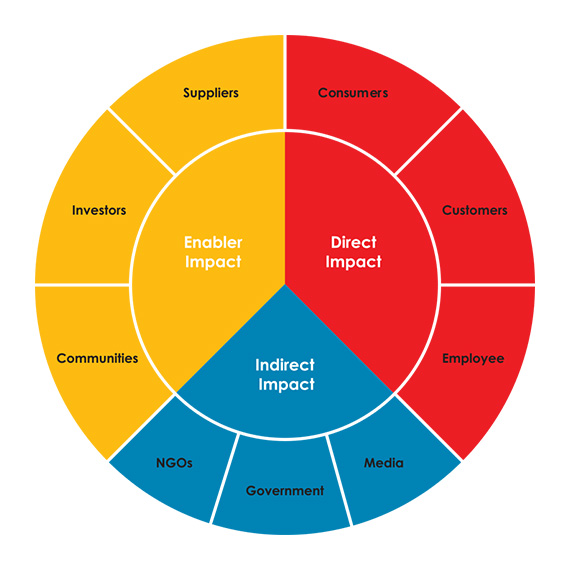
Narturing suppliers
To effective drive top-line growth with triple-bottom-line thinking with suppliers, this company should
- Align its suppliers’ sustainability goals and initiatives with its own
- Enable supplier training and capacity building
- Actively engage suppliers regarding sustainability issues to ensure supply continuity and to reduce non-value-added costs
- Energize suppliers to deliver sustainable, innovative solutions in exchange for demand assurance
- Monitor and measure its suppliers’ performance relative to sustainability goals and objectives
Companies are seeking supply-side-focused sustainable initiatives as they often offer a high potential to reduce costs and risks
Companies are increasingly acting collaboratively with suppliers rather than in a transactional mode when implementing sustainability-related programs or initiatives
Companies are developing and implementing sustainable procurement policies
Companies often share supply chain sustainability goals, metrics, and policies with suppliers
Companies that partner with suppliers to develop win-win relationships involving sustainability reduce costs and risks – delivering competitive advantage to both entities

Attracting investors
To effective drive top-line growth with triple-bottom-line thinking with investors, this company should
- demonstrate that in the long run, sustainability-related initiatives benefits shareholders more than those that are non-sustainable
- Move toward carbon neutrality and show how it contributes to the bottom line in the long run
- Hold workshop that serve to educate the investor community about the business impact of sustainability issues
- Engage in sustainability initiatives that will enhance its brand equity and its reputation
- Make sustainability challenges an aspect of its risk profile and their management the responsibility of its board of directors
Investors are increasingly evaluating a company’s performance from the triple-bottom-line perspective
Trends in the business world show a mark growth in value and sustainability-based investing
Companies are conducting materiality analyses to identify the sustainability-related issues most relevant to stakeholders and their futures
Companies are developing and implementing strategies to address material issues that add the greatest value
Companies are learning to package and communicate progress on sustainability metrics terms investors are most familiar with and understand the implications of

Investing in Communities
To effective drive top-line growth with triple-bottom-line thinking with communities, this company should
- Provide leadership and expertise when communities establish sustainability goals and objectives and shape agenda
- Provide financial and employee support to causes which are triple-bottom-line oriented and most relevant to local communities
- Help communities acquire the technical know-how needed to address community issues
- Communicate and publicize ( internally and externally ) progress achieved through community-based sustainability programs and initiatives
Companies and communities can enjoy a symbiotic, sustainability-centered relationship in both good times and bad times
Business leaders increasingly view caring for community as an opportunity to gain a competitive advantage
Company programs often help communities address social issues, enhance quality of life, and improve the environment
The most robust company community programs effectively relate to business objectives
Company community programs’ progress is best measured and reported with both frequency and transparency
